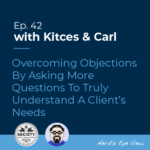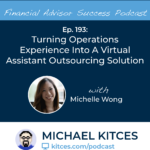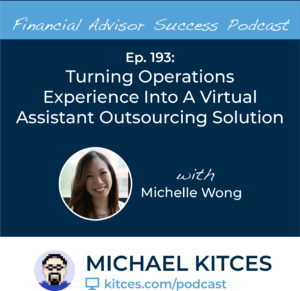Enjoy the current installment of "Weekend Reading For Financial Planners" – this week's edition kicks off with the buzzing industry news that Merrill Lynch is barring its brokers from receiving gifts, meals, or entertainment from its wholesalers, in what some see as a shift of even large brokerage firms to begin stamping out more conflicts of interest in the new era of Regulation Best Interest, and critics suggest is simply the new path of brokerage firms to require asset managers and product companies to go through (and revenue share to) the home office instead of its brokers directly (payments which must be disclosed, but are not against the rules for broker-dealers under Regulation Best Interest).
Also in the news this week are some notable new industry studies, including one that looks at what clients actually want to talk about in advisory meetings beyond their portfolios (from protecting against identity theft to new housing decisions), the latest data on which types of consumers are actually using robo-advisors (only 10% of Millennials with <$50,000 of assets but almost 50% of those with >$500,000!), and the latest trends in how advisory firms are investing (showing the continued dominance of ETFs, an ongoing decline in the use of individual stocks, bonds, and REITs, but what is still, at best, just a small minority of advisors who are actually 'passive' as most advisors appear to be using ETFs as their own active management portfolio building blocks).
From there, we have several more interesting investment-related articles, including the launch of the new Long Term Stock Exchange by Lean Startup founder Eric Ries, the growing turmoil in prime money markets as interest rates appear to be pegged near the zero-bound for a long time to come and 'gates' implemented to prevent a 2008-style run on money markets may actually be exacerbating one this time around, growing questions about the long-term viability of the 60/40 portfolio in a persistent low-yield environment and what the future alternatives may be, and a look at how no-commission annuities may be emerging as a bond alternative for advisory accounts.
We wrap up with three interesting articles, all around the theme of being (and feeling) wealthy and what helps us get there: the first is a review of the recent Morgan Housel book "The Psychology Of Money" which explores the differences between being rich and being wealthy; the second examines what it takes to not feel 'rushed' (hint: it's all about delegation to focus on the biggest and most important tasks); and the last explores recent research finding that those who work with financial advisors don't just do better with their money... they're also happier with it, too!
Enjoy the 'light' reading!







 Welcome back to the 193rd episode of Financial Advisor Success Podcast!
Welcome back to the 193rd episode of Financial Advisor Success Podcast!

